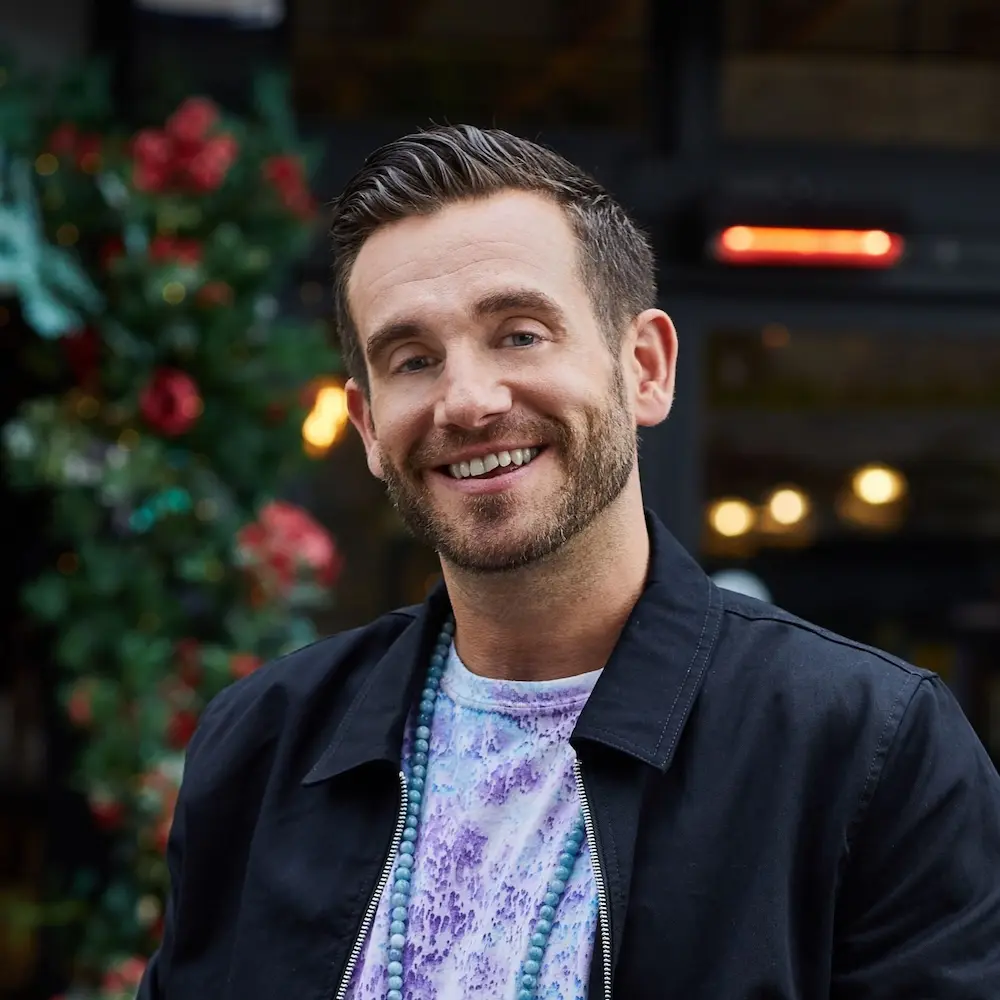Chalk it up to Hollywood to turn lucid dreaming into genius works of art. Movies like Inception, Dr. Strange, and The Good Night have truly exposed us to the curious world of lucidity. But what is it exactly?
To put it simply, it’s being fully aware—a.k.a. lucid—during a dream. And there are incredible benefits of lucid dreaming for your mental, physical, and emotional health.
If you’re on the fence about whether you should actively participate in the sleep world or not, there are some things about this dream state that may surprise you. Let’s dive in.
What are the benefits of lucid dreaming?
“Many of our dreams are used as mediums for psychological integrations and play a vital role in our mental healthiness,” explains Charlie Morley, lucid dreaming expert and trainer of Mindvalley’s Experience Lucid Dreaming Quest.
When it happens, the prefrontal cortex (the part of the brain that controls self-reflection and self-examination) becomes highly active. Interestingly, a study published in the Journal of Neuroscience found that those who can lucid dream naturally tend to have a larger anterior prefrontal cortex than those who aren’t able to. When your prefrontal cortex is large, the more long axons it contains, and the more likely you’re in tune with your consciousness.
So if you’re on the fence about whether you should actively participate in the sleep world or not, here are three advantages that might help swing you.
1. Trauma integration
Trauma happens for a number of reasons, and according to the American Psychological Association, “a person may experience trauma as a response to any event they find physically or emotionally threatening or harmful.”
Charlie has taught lucid dreaming to hundreds of people suffering from PTSD, from war veterans to child abuse victims. He’s seen firsthand the power it has in healing pain and illness as well as overcoming fears and emotional trauma.
Once you become lucid, neuroplasticity becomes engaged. That means you can rewire your brain while you sleep.
— Charlie Morley, author of Mindvalley’s Experience Lucid Dreaming Quest
There are several studies that show how lucid dreaming can help with trauma. For instance, a 2009 European Science Foundation workshop found “similarities in brain activity during lucid dreaming and psychosis.”
Another study conducted by the Institute of Consciousness and Dream Research looked into if lucid dreaming could be used as an intervention for nightmares in patients with PTSD. It reported that although the therapy didn’t have any effects on nightmares, it did significantly decrease the patients’ levels of anxiety and depression.
These studies suggest that lucid dreaming can be used as a powerful tool to help with PTSD and other mental health issues.
2. Shadow integration
“Shadow” is a term coined by psychiatrist Carl Jung. It describes the repressed part of the self—both positive and negative aspects. This includes our shame, fears, and wounds, as well as our divine light, blinding beauty, and hidden talents.
So when it comes to shadow integration, it’s leading the unconscious parts into consciousness—bringing the hidden parts of the self out of the shadows and into the light, so to speak.
Now, for some, that might seem scary or dangerous. But believe it or not, it has incredible advantages for your mental health.
A 2021 study exploring the potential adverse effects of lucid dreaming found this hybrid sleep-wake state is linked to greater mental well-being. It notes that the lucid dreamers reported having “emotional positive experiences” and most didn’t “ascribe any negative consequences to lucid dreaming.”
Additionally, a survey by the International Journal of Dream Research reported that the most common reasons for lucid dreaming include:
- Wish fulfillment
- Solving waking problems
- Physical or mental healing
- Meditation
- Overcoming fears or nightmares
Interestingly, lucid dreaming neutrally or, in the case of wish fulfillment, positively influenced the participants’ moods when they woke up.
The most dangerous mistake is the projection of the shadow onto others; this is the root of almost all conflicts. Until we make the unconscious conscious, it will direct our life and we will call it fate.
— Carl Jung
Your shadow is a great source of power and creativity. But until you allow yourself to bring it to light, it will remain untapped, and your full potential will remain unreached.
3. Getting answers to big questions
Lack of clarity not only brings about anxiety but also causes apathy and makes you feel stuck in life. It leads to question after question—should you take that job? Or date that person? How do your choices affect your life?
Your vision will become clear only when you can look into your own heart. Who looks outside, dreams; who looks inside, awakes.
— Carl Jung
Lucid dreaming can also spill over into your waking life because it offers a rare opportunity for your conscious mind to come “face-to-face” with your unconscious mind. And when you start asking 21 questions about your life, consider diving into the deepest parts of your subconscious to find the answers you seek.
A study published in the International Journal of Dream Research explored the possibility of solving creative problems in lucid dreams. The findings suggest that it’s highly likely when “dealing with more creative rather than logical tasks.” What’s more, the results show that “dream characters can provide plausible creative advice to the dreamer.”
When it comes to practicing motor skills, one study published in Sport Psychologist looked at how lucid dreaming could be used to enhance performance in a coin-tossing task. They found that rehearsing in a lucid dream enhances subsequent performance in wakefulness.
So if you’re looking to find answers to the big questions of life, take a load off and access your inner intelligence to get the answers you need.

Are there famous people who practice lucid dreaming?
In fields like art, spirituality, science, sport, music, and more, some of the most extraordinary people have used lucid dreaming to create world-changing ideas. Here are a few professional lucid dreamers and how they used this dream state in their life:
1. Salvador Dali to spark inspiration and creativity
Surrealist painter Salvador Dali has got to be one of the most famous lucid dreamers. He’s well known for his surreal “dream-like” paintings that are admired by people around the world. The visions he had in his dreams inspired many of these art pieces.
How lucid dreaming helped
A particular technique he used allowed him to slip into a dream state and tap into the limitless creativity reservoir of his unconscious mind for inspiration. He called it “slumber with a key.”
This involved relaxing in an armchair with both his hands hanging at the edge of the arms of the chair. On one hand, he would gently hold a key. Directly below, on the floor, he would place a plate. As he’d slip into unconsciousness, he would naturally let go of the key, and the noise of the key hitting the plate would wake him up.
It was during these precious few seconds that he’d be able to remember his dreams and find inspiration. Like “The Persistence of Memory”—inspired by a lucid dream—is by far one of Salvador’s most recognizable paintings.
2. Jack Nicklaus to boost physical performance
When golfer Jack Nicklaus turned professional, he took the world of golf by storm. He broke records, won Rookie of the Year, and became the youngest player at the time to win the Masters tournament. He even made the cover of TIME magazine.
Then in 1964, Nicklaus experienced a significant dip in his performance. But as quickly as fell out of form, he returned to dominance just as abruptly. And what did he credit for the sudden boost in his performance? A vivid dream of him practicing golf swings.
How lucid dreaming helped
Jack Nicklaus claimed to improve his golf swing by practicing it in his dreams. Here’s how he explained it:
“Wednesday night, I had a dream, and it was about my golf swing. I was hitting them pretty good in the dream, and all at once, I realized I wasn’t holding the club the way I’ve actually been holding it lately.
I’ve been having trouble collapsing my right arm, taking the clubhead away from the ball, but I was doing it perfectly in my sleep. So when I came to the course yesterday morning, I tried it the way I did in my dream, and it worked. I shot a sixty-eight yesterday and a sixty-five today.”
Today, Jack Nicklaus is widely regarded as the greatest golfer of all time.
3. Ray Kurzweil to find solutions to problems
Inventor Ray Kurzweil is arguably one of the most innovative minds in the world today. And his inventions have helped revolutionize the way we function today (those flatbed scanners and text-to-speech we use—credit goes to Ray).
But his phenomenal creations are not the result of tinkering away at his inventions for hours a day. In fact, his most creative work is done in bed through a lucid dreaming process.
How lucid dreaming helped
Ray explains that he would regularly assign a problem to himself just before bed. It could be anything from a business decision to a particular invention he’s stuck on. This process, according to him, is a way of “seeding your subconscious to influence your dreams.”
He finds that as he sleeps, potential solutions drift in and out of his dreams. But when he becomes lucid, that’s when the magic really happens.
“The most interesting thing about dreams is that you don’t consider it unusual when unusual things happen, like a room floating away,” explains Ray. “You accept this lack of logic. And that [irrational] faculty is needed for creative thinking. But you also need to be able to apply a critical faculty, because not every idea that’s different and out of the box will work.”
4. Tom Holland to manage stress and anxiety
Can lucid dreaming cause sleep paralysis? On the contrary, it can help ease nighttime afflictions.
Case in point: actor Tom Holland suffers from a web of stress and anxiety due to the level of fame the Spiderman franchise has catapulted him to. It has led him to experience parasomnias, including sleepwalking, sleep undressing, and especially sleep paralysis.
In an interview with GQ, Tom describes one experience he’s had with sleep paralysis — his bedroom is filled with paparazzi, incessantly clicking away and filling the room with bursts of white flashes. And Tom… He’s frozen and panicking.
How lucid dreaming helped
Tom credits director Jon Watts for turning him to lucid dreaming, which has benefited him psychologically.
He now uses the practice to reduce his parasomnia episodes, become lucid in nightmares, and use reality checks to know that it’s just a dream and then change it. It’s helped him so much that he can now use his dream state for fun.
“The last time it happened to me, I was flying around the Golden Gate Bridge,” says Tom to GQ. “It was awesome.”
3 steps to lucid dreaming
If you’re curious to know what it’s like to be in this dreaming state, here are three basic steps—what Charlie calls “The 3 D’s”—you can start off with:
1. Dream recall
“If you think you don’t dream, you don’t try to remember,” says Charlie. But the fact is everyone dreams.
So here’s how you can recall what happens when you fall into REM (rapid eye movement)—the state where lucid dreams happen:
- Before bedtime, set the intention to remember your dream.
- “Tonight, I remember my dreams. I have excellent dream recall.” Repeat this to yourself 21 times as you fall into the hypnagogic state—the period of drowsiness before you fall asleep.
It’s also important to keep a notebook or notepad next to your bed so you can download your experiences into your dream journal.
2. Dream journal
One of the best ways to keep track of your dreams is by dream journaling. It helps bridge your conscious and unconscious mind.
Journaling will also enable you to explore different parts of your mind, maybe even places you didn’t know existed. It may also help you get insight into hidden parts of yourself, a.k.a your shadows (scroll back up to “shadow integration”).
Charlie suggests writing down your vivid dreams whenever you wake up from them, even if it’s in the middle of the night. Oftentimes, when we wait until the morning, we may not remember all the details. He says, “The reason we write down our dreams is not only to solidify the memory but also to spot patterns.”
3. Dream signs
Tom Holland explains in GQ, “Sometimes, if I’m having a really bad dream, I’ll look at a sign and go, ‘Oh, I’m dreaming.’”
What’s a dream sign, you may ask. It’s reality testing, in a sense—something, anything in your dream that can reliably indicate to you that you’re dreaming. They are things that aren’t part of your everyday life, like talking animals, ninja babies, or in Charlie’s case, Beyoncé.
So when you see these things, you can set them as lucidity triggers by acknowledging they’re signs in your dreams. Then you know you’re in a dream state.
Dream on
Lucid dreaming is an absolute feast for the imaginative mind. And its benefits are aplenty—you can work with your deep-seated beliefs, fears, experiences, and blocks and transform them in ways you may not otherwise be comfortable with.
However, it’s best to remember to always keep safety measures in place, including reality checks and keeping a dream journal. That’s why Mindvalley recommends learning first with a lucid dreaming teacher, such as Charlie in Experience Lucid Dreaming Quest. With guidance, you’ll be able to (safely) deepen your awareness of your consciousness and access your inner fountain of greatness.








